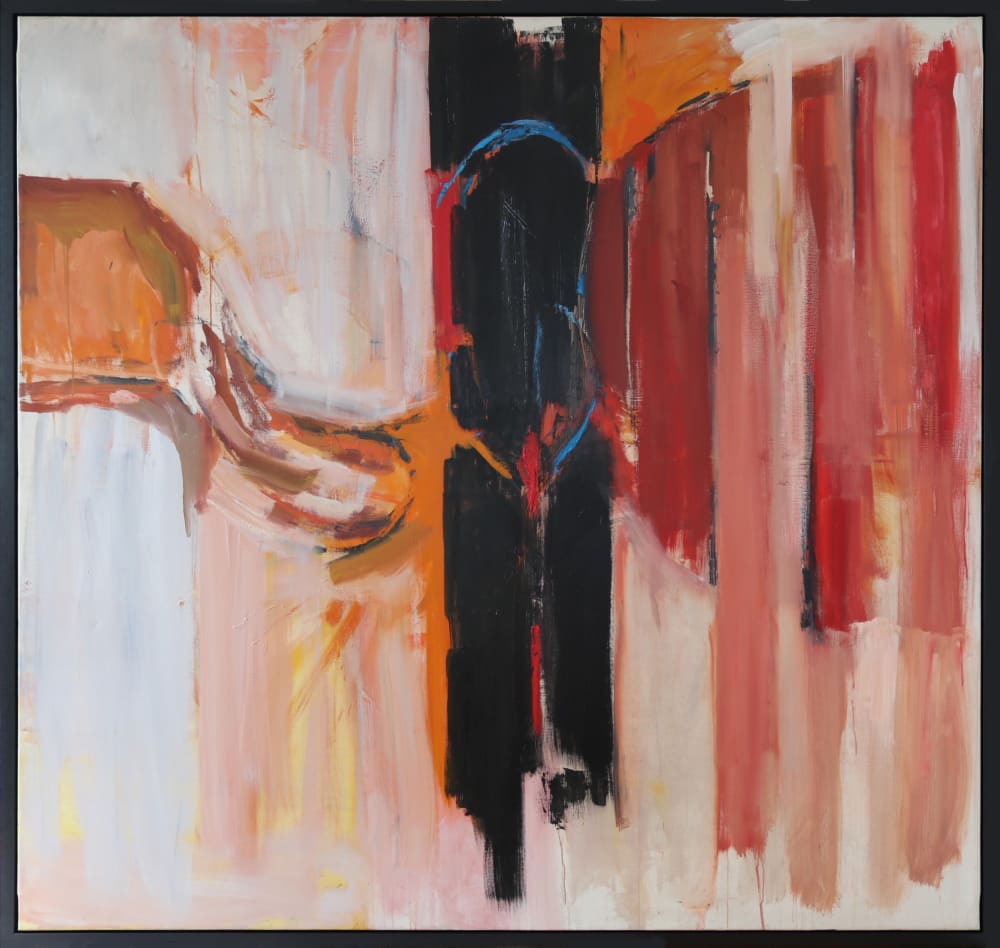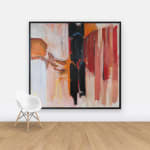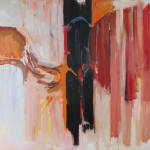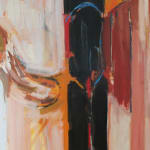
Divided: Red and Orange on wall. Adrian Heath 1963

Divided: Red and Orange by Adrian Heath

Divided: Red and Orange by Adrian Heath, detail
Adrian Heath British, 1920-1992
Framed: 179 x 189 cm (70.5 x 74.4 ins)
Further images
Provenance
The Artist's Estate, where purchased by the previous owner
Exhibitions
The Redfern Gallery London, Large Abstracts, 4 September-4 October 2019
The Redfern Gallery London, Spring Exhibition, Modern British Art, 13 March - 11 May 2018
During the early 1960s, partly in response to the American abstract expressionists and in particular the work of Willem de Kooning and Robert Motherwell, Heath's painting increased in scale, gestural freedom and expressiveness. But unlike the Americans, Heath's work emerged from a process of numerous preliminary drawings, either of landscapes or figures. Between 1959 and 1963 the prestigious Hanover Gallery staged 3 exhibitions of Heath's work. Whilst a sense of dynamic movement was retained, by the final instalment of these exhibitions, softer more fluid forms had supplanted the geometry that Heath had built his 1950s career on. One such more fluid painting sold in March 2022 at Christie's. A much larger example is the present work, Divided: Red and Orange, painted in 1963; a painting which particularly evidences the artist's increasing integration of the female figure and sensuality into his work. Many years later in an interview, Heath shed some light on part of his intent in his use of figurative elements: “.. I like them to be absorbed into the movement of the whole so that a new form has been created. It’s not a particular person that you’re looking at but the feel of soft as opposed to hard forms”. The artist wished for any figurative element to be absorbed and transformed by the whole. Divided: Red and Orange is also a good example of Heath's fondness of juxtapositing opposing forces: soft ovoid forms against hard linear areas of colour; frantic movement colliding with static vertical swathes of impasto paint; spaces filled with light contrast with areas of impenetrable darkness.
As noted, Heath was seeking a sensual response to these new works; the feel of soft rather than hard forms for example. Jane Rye further elaborates on this idea in her biography of Adrian Heath’s life and work, although there may be an element of Heath playing to his audience in this anecdote: ‘“The smell of flesh" was what he was after, he told Francis Bacon when he met his Hanover Gallery stable-mate in the street one morning and took him back to the studio to view the paintings; Bacon, something of an expert on the subject, replied that he had succeeded admirably.' (Jane Rye, Adrian Heath, Lund Humphries, Farnham, Surrey, 2012, p.149).







